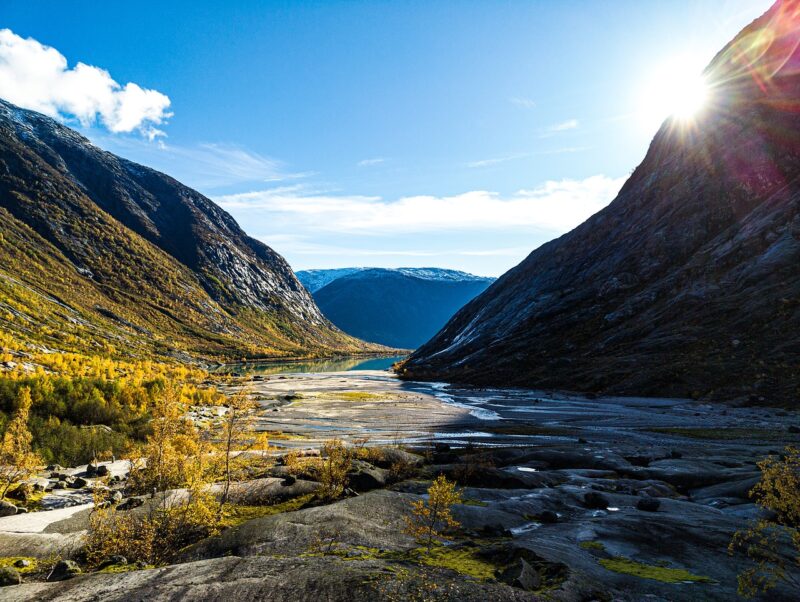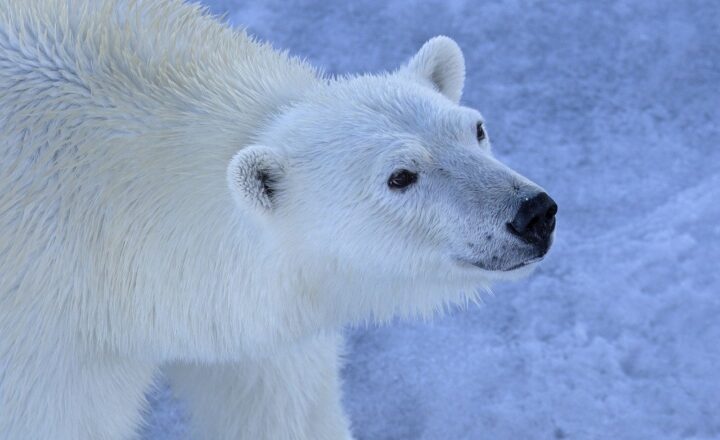How Glacial Meltwater Forms Rivers and Shapes Landscapes Over Time
November 15, 2024

Glacial meltwater is more than just water; it’s a dynamic force that shapes the planet’s landscapes, carving valleys, and forming rivers that influence ecosystems and human life alike. Understanding how this process works offers insight into our planet’s climate history and future.
1. The Formation of Glaciers
Glaciers are massive, slow-moving bodies of ice formed from accumulated snow that compresses under its weight. They usually form in regions where snowfall exceeds melting over a long timeframe. This accumulation can take hundreds to thousands of years.
The two main types of glaciers are:
- Continental Glaciers: These are expansive sheets of ice covering vast areas, such as Greenland and Antarctica.
- Alpine Glaciers: Found in mountain ranges, these glaciers flow down valleys from a central source of snow and ice.
As glaciers move, they grind against the bedrock beneath them, causing erosion and altering the land. This process not only shapes the physical landscape but also prepares the stage for glacial meltwater to act as a significant geological agent.
2. The Dynamics of Glacial Meltwater
The melting of glaciers is a critical aspect of their lifecycle, typically occurring due to rising temperatures in the spring and summer months. The meltwater that results is essential in carving landscapes:
– **Sources of Meltwater:** The melt occurs when the ice absorbs heat from the sun and surrounding environment. This process generates pure, cold water that begins to flow downhill, following the contour of the landscape.
– **Flow Patterns:** As temperature changes, the meltwater can take different forms. It can either flow as surface runoff or percolate into the ground, affecting not only the environment but also human water systems.
**Hydraulic Erosion:** As meltwater travels, it can carve out valleys and create rivers. The kinetic energy of fast-moving water can erode rock and soil, leading to dramatic geological changes over time. This erosive process is crucial in shaping well-known glacial features.
3. Formation of Rivers from Meltwater
Meltwater from glaciers contributes to river formation through several distinct processes:
– **Glacial Rivers:** Initially, meltwater accumulates in glacial streams, which can be ephemeral. These streams can vary in size, depending on the volume of meltwater and seasonal temperatures.
– **Influencing River Systems:** As these streams converge, they form larger glacial rivers that can carry substantial amounts of sediment downstream. This resultant river can be rich in minerals and nutrients, fostering biodiversity in surrounding ecosystems.
– **Changing Course:** Glacial rivers are known for their meandering nature, a result of both their seasonal flow changes and sediment load, creating new pathways and shifting the landscape.
**Sediment Transport:** The mix of rock flour and other materials carried by glacial meltwater can contribute to the development of fertile floodplains and deltas downstream, showcasing the dual nature of glacial activity as both destructive and constructive.
4. Geological Features Created by Glacial Meltwater
The interaction of glacial meltwater with the landscape gives rise to various geological features:
– **U-Shaped Valleys:** Erosion caused by glacial movement often results in the formation of U-shaped valleys, which are characterized by their broad floors and steep sides.
– **Cirques and Tarns:** These are bowl-shaped depressions created by the melting of glaciers. Cirques often hold small lakes called tarns, which are often seen in mountainous regions.
– **Moraines:** Accumulations of debris deposited by glaciers can create ridges, known as moraines, that serve as natural barriers and contours in the landscape.
– **Kettle Lakes:** Melting blocks of ice trapped beneath moraines can create depressions filled with water, forming kettle lakes, which are common in once glaciated regions.
Each of these features tells a story of the glacier’s journey and the profound impact of meltwater on Earth’s geological history.
5. Climate Change and Glacial Meltwater
Recent studies show that climate change significantly affects glacial melt rates. As global temperatures rise, glaciers melt at an accelerated pace, altering the natural flow of rivers and landscapes. The implications of this rapid melting are significant:
– **Increased Water Supply:** In the short term, accelerated meltwater could lead to increased river flows and more water availability for ecosystems and human populations reliant on glacial runoff.
– **Potential Flooding:** However, more rapid melting also heightens the risk of flooding in the short term, posing threats to local infrastructures and communities.
– **Long-Term Risks:** As glaciers retreat, the long-term supply of meltwater can decline, creating a water scarcity issue in many regions, particularly affecting agriculture and drinking water sources.
– **Ecosystem Disruption:** The ecological systems dependent on stable water flows may suffer from the fluctuations caused by unpredictable meltwater patterns, leading to shifts in biodiversity and habitat loss.
Understanding the relationship between glacial meltwater and climate change is crucial as we navigate environmental challenges in the future.
Conclusion
Glacial meltwater is a powerful force in shaping our planet, influencing the formation of rivers, valleys, and ecosystems. Its transformative role demonstrates the interconnectedness of natural processes. As climate change accelerates glacial melting, the impacts are felt beyond mere landscape changes, affecting water supply, ecosystems, and human communities worldwide.
Recognizing and understanding these changes is imperative for sustainable environmental management and conservation efforts as we advance into a future of climate uncertainty.







